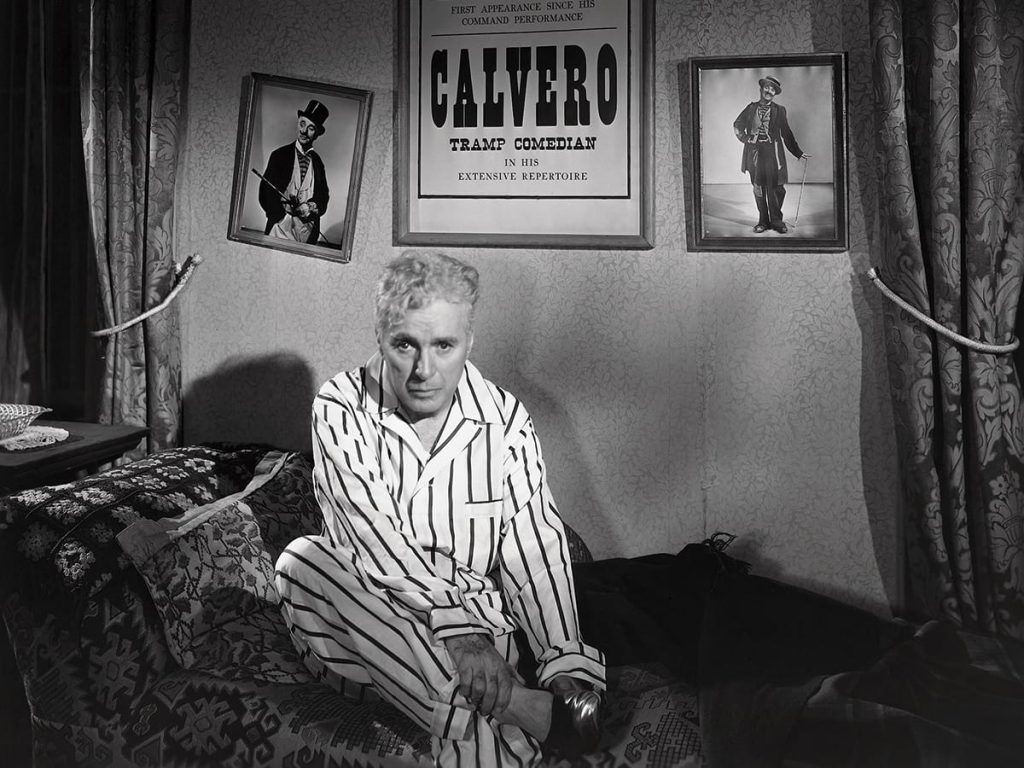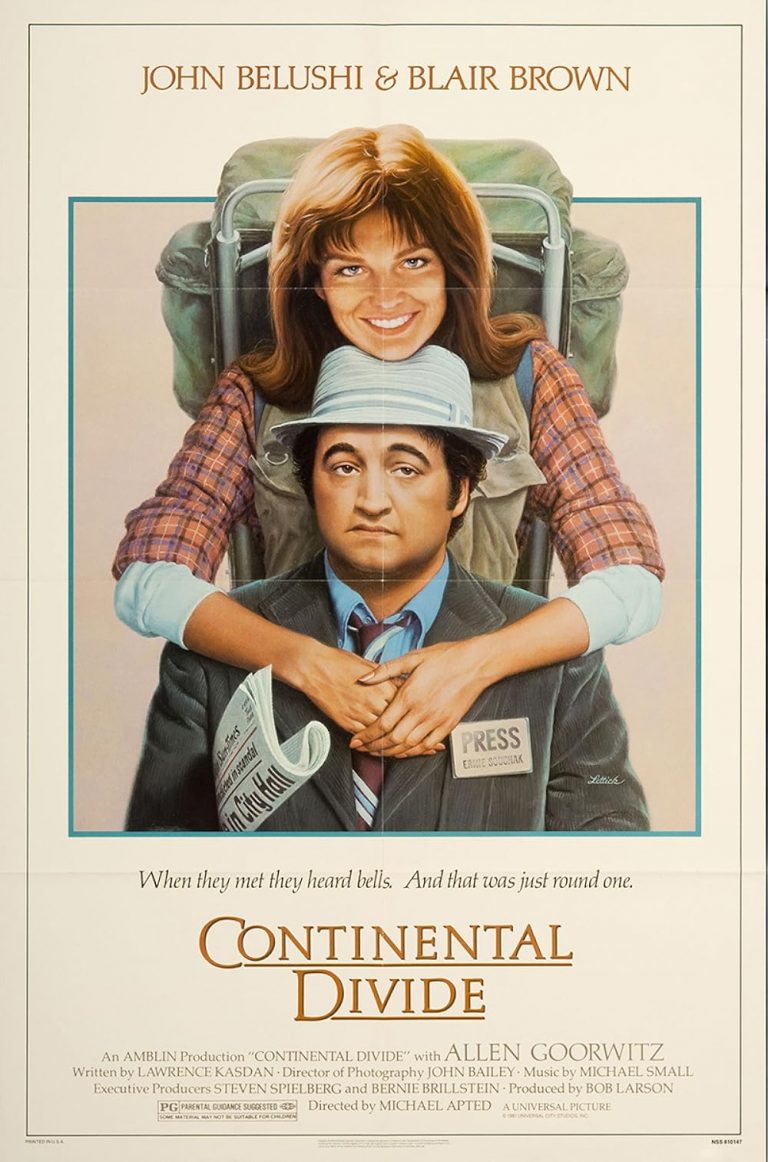Starring: Charlie Chaplin, Claire Bloom, Sydney Earl Chaplin, and Buster Keaton
Grade: C+
This is a movie about an aging, alcoholic clown who saves a suicidal ballerina from killing herself and then tries to save her career, just as he tries to revive his. Who would I recommend this for? Honestly!
Summary
To open, there is a caption stating, “The glamour of limelight, from which age must pass as youth enters. A story of a ballerina and a clown…”.
In the summer of 1914 in London, in the late afternoon, washed-up drunk Calvero (Chaplin) comes home to his apartment to find that his neighbor Terry Embrose (Bloom) tried to kill herself by taking some sort of poison, turning on the gas stove in her room, and locking the door. He smells the gas, breaks in the room, pulls her out, and lays her on the steps, getting a doctor from a nearby dispensary to check on her. Since landlady Mrs. Alsop (Marjorie Bennett) isn’t home, the two pick up Terry’s unconscious body and take her to Calvero’s apartment. The doctor seems to stabilize things but notes she’ll need to be looked after by Calvero for a couple of days. Since this was an attempted suicide, Terry could go to jail, so the doctor isn’t going to call an ambulance. He gives Calvero some advice on how to take care of her and says he’ll have a prescription for her ready in ten minutes. Once the doctor leaves, Terry wakes up and asks Calvero why he didn’t let her die. As Calvero goes on a speech about the miracle of life, she falls asleep, so he leaves the room. He steps out for a moment to hear Mrs. Alsop see the broken-in door at Terry’s apartment and tells her friend aloud about how she thinks Terry’s responsible for the mess, wants her jailed, and how she’s for sure kicked out of the apartment building.
As Calvero comes back from picking up some groceries, Mrs. Alsop goes up to his room to drop off his laundry. He gets back just in time to stop her from entering his apartment. Seeing how weird Calvero is acting once he gets into his apartment, Mrs. Alsop looks through his keyhole and sees Terry sleeping. Mrs. Alsop starts throwing out accusations everywhere, so Calvero tells her he’s the one who broke down the door, and she has a leaking gas pipe she needs to fix. She tells Calvero that Terry got there only six weeks ago and always considered her trouble. She wants her out. Calvero admits Terry tried to kill herself but pleads with her not to call an ambulance, so the authorities don’t get involved. He says if anyone questions it, she can stay in his room, and they can pass for man and wife which Mrs. Alsop laughs off. She leaves but tells him she still wants Terry gone. Eventually, Calvero goes to sleep and dreams of when he was on top as a famous comedian. After performing an act where he acts as if he’s a flea trainer and gets a round of applause, he then sees no one in the crowd. He wakes up in sadness and then goes back to sleep. The next morning, the housekeeper wakes up Terry on behalf of Calvero to see how she’s doing, and she refers to Calvero as Terry’s “husband”. Calvero comes in and explains everything to Terry and checks on her to see she’s doing much better. Though her room has been given up by Mrs. Alsop, Calvero offers for Terry to stay at his place until she knows what to do with her life.
She’s still very depressed, but Calvero offers words of encouragement that seem to help. Terry tells him that things started because she was in the hospital for five months with rheumatic fever, and it affected her health so badly, she wasn’t able to work. Apparently, she was a dancer and a member of the Empire Ballet. Over dinner, they discuss her family, her general disposition, and how life itself seems so desolate. As Calvero tries to give life some credit and makes her laugh a bit, we can see their friendship start to blossom before bedtime.
Following another Calvero stage act sequence he dreams up, this time involving Terry as a participating actress, we see her crying in the morning until he interrupts to make her breakfast. He talks about how he’s considering doing his old acts again but sees Terry breaking out into tears. She tells him she tried to stand up this morning but collapsed. She can’t feel her legs and believes she’s paralyzed. He calms her down and tries to inspire her. Once he talks about the second chance at life he was lucky enough to receive, they start to discuss his problems. He admits he started to lose the audience sometime in his career and that’s why he started drinking heavily. He had a problem with alcohol before too. He felt he couldn’t be funny without it. It got to the point where he got a heart attack and almost died. Though he still drinks occasionally, he’s doing much better now. Following Calvero talking about how wishy-washy a crowd can be, he receives a telegram from his agent Redfern (Barry Bernard) who wants to see him. He tells Terry he’ll call the doctor on the way and leaves. At Redfern’s office, he’s told he can get a week of performances at the Middlesex Music Hall. Unfortunately, his agent doesn’t tell him the terms and tells him he probably won’t get star billing either. He takes this as disrespect and insists his name is still worth something. However, Redfern admits the Middlesex Music Hall is only throwing this offer out because they’re doing it as a favor to Redfern. Originally, they didn’t even want Calvero. Now with his confidence shattered, he accepts whatever the offer is and considers doing the act under a different name, with Redfern agreeing it’s a good idea.
He comes back to his apartment and talks with the doctor. He says the toxic conditions have all cleared up but there’s nothing wrong with her legs. In fact, he finds no traces of rheumatic fever. The doctor believes she has a case of psycho-anesthesia, a form of hysteria that has the characteristics of paralysis without being so. It’s all psychological. This is a direct quote from the doctor:
“Having failed at suicide, subconsciously she decided to become a cripple.”
He says she has to fix this on her own, or with the help of a psychologist. Well, Calvero thinks he can help her realize her own problems, work on her recovery, and overcome the wall in her subconscious that’s making her believe her fake sickness. As Calvero helps her regain her strength in mind, body, and soul, he starts to become reinvigorated by the young woman’s energy. He starts to believe in himself again. Unfortunately, life has a tendency to bring him back to reality at the same time.
My Thoughts:
You can tell Charlie Chaplin was getting a little more personal with Limelight. The story is centered around a formerly famous comedian who has fallen out of favor with the public and is trying to revive his career. Does this sound familiar?

Though the real-life Chaplin was nowhere near the hard times his character Calvero was going through, we can’t ignore the obvious similarities he has with the real Chaplin. It’s been well documented where his career was at during this timeframe because of his personal life and people publicly accusing him of being a communist. It started his downfall in the film industry, an industry he helped develop as the art form it would become forever after. Thankfully in real life, Chaplin found a way to continue with his career albeit to lesser success. On the other hand, his character Calvero just tries to keep on doing his same shtick and getting depressed when no one finds him funny anymore.
This is what happened to Gallagher, though I digress.
Limelight is one of the very few talkies Chaplin made in his career. Where does it rank among them? Well, that’s up to you because I don’t think any of them are really that good (with the lone exception of The Great Dictator). I appreciate the story Chaplin was trying to tell because of how absolutely random it is, but you can tell Chaplin had his signature hands all over it with the screenplay. The content and the characters have their moments, but the problem is how wordy the script is. Chaplin loves to hear himself talk. This much is evident as he goes on and on with these passionate monologues about life, death, and everything in between, taking up way too much screentime.
It’s ironic how a silent film star who thought talkies were a fad wants to talk this much.
As a screenwriter, you need to know when excessive dialogue can be summed up with a few strong sentences (like when he talked about how it’s a “sad business being funny”) or even a dramatic glance. Sometimes, you just need to act. Not everything needs to be said. This is what separates films from books. If he felt these monologues were this vitally important to the story he was trying to tell (they weren’t), he should’ve just made this thing into a book. He was speaking in paragraph after paragraph anyway. His inability to shut the fuck up every so often ruined the potential of the movie. There’s so much that needed to be cut but considering how Chaplin’s hands were on everything he made back then, I bet you he considered everything too important to edit out. It’s not just the crazy speeches either. It’s the ten-minute stage performance of Calvero and Terry’s ballerina performance, it’s the several minutes long dream sequences of more stage performances, AND it’s Calvero’s rambling soliloquies. The final sequence with Calvero and his friend’s final stage act was seven minutes alone.
I’ll give the last one a pass because we got to see Charlie Chaplin team up with Buster Keaton for the first and only time in cinema history, giving us a legendary moment in time. It’s an awesome sequence, with a triumphant feel to it. Regardless, the rest of the stuff I mentioned is inexcusable. These dance sequences and stretched out stage performances aren’t needed to get the point across. You can show a minute or two to get the idea, but that’s it. Bloated would be a great word to sum up Chaplin’s Limelight in general.
You just need to know when to trim the fat. The first dream sequence was solid, especially when the performance was over, and we see Calvero look at an empty auditorium. The silence was deafening. It was a perfect way to show us where Calvero is at in his career, as well as his mental state. It’s stuff like this and the later closeups on the devasted Calvero, as they turn the lights out on him when he sits on the stage after practice, that show the potential of what the film could’ve been in a dramatic sense.
There are other issues too. Terry, the suicidal ballerina (which could’ve been an alternate title for this movie), falls in love somehow with Calvero as she recovers. At one point, despite not even dating, she asks to marry him. Though their relationship struggles get a bit redundant throughout, this isn’t the worst of the problems. First of all, there’s like a thirty-year difference between them which makes me think that this also mirrors Chaplin’s personal life because of his tendency to marry a little too young. Second of all, he has the audacity to turn her down because he knows she has a long life to live and will want someone younger. Is this really the problem? Why doesn’t he acknowledge how insane she sounds for asking him to marry her when they’ve never even dated? THAT is the issue at hand. She’s not mentally well! I’m also supposed to believe that Calvero tries to avoid Terry at every cost because he knows he’s not right for her? The real Chaplin is piping her 100%. You’re lying to yourself if you think otherwise. In fact, Chaplin is lying to himself.
It’s also not lost on me that Neville, the man that loves her and who Calvero thinks is the one she’ll end up with, is played by Chaplin’s real-life son. Is this supposed to be Chaplin’s way of saying he’s still got it, and he can take a woman in her prime compared to his son? It’s just odd. The situation is never really resolved either (SPOILERS, SPOILERS, SPOILERS) because she never ends up with Neville. So, you’re honestly telling me she loved Calvero this whole time, and he still dies? This wasn’t the right ending at all. It needed to end with Calvero dying after his performance like it happened but, on his deathbed, he needed to accept the fact that Terry and Neville belonged together. Then, fully committing to the tragedy of Calvero’s story, he can admit he did love her, but he’s ready to let go. This would’ve made much more sense and would’ve had a much better emotional impact.
*Her belief in her fake paralysis was a weird twist, but it was unintentionally hysterical to see Calvero slap Terry backstage when she tried to act as if she was losing feeling in her legs mid-performance.*
Limelight was decent, but it was overly long and refuses to get to the point. As a Chaplin fan, it’s a decent watch for historical purposes and to see where he was at creatively in his later years, but one viewing of this movie is quite enough.





+ There are no comments
Add yours